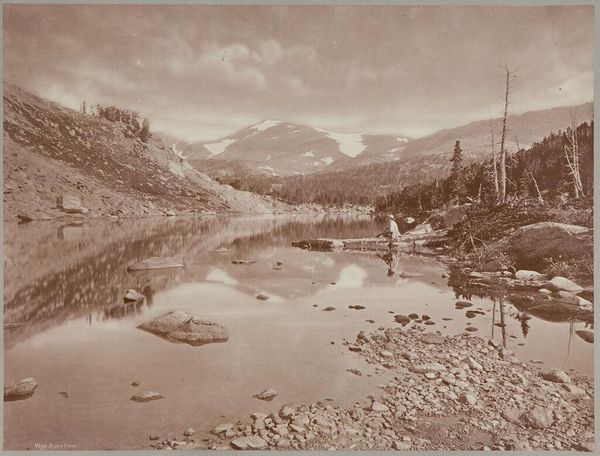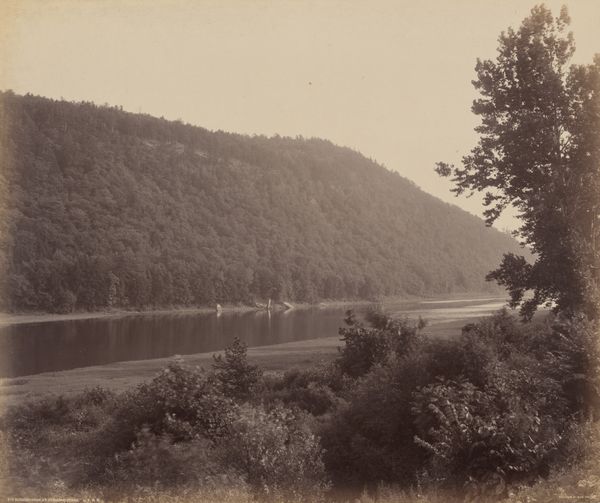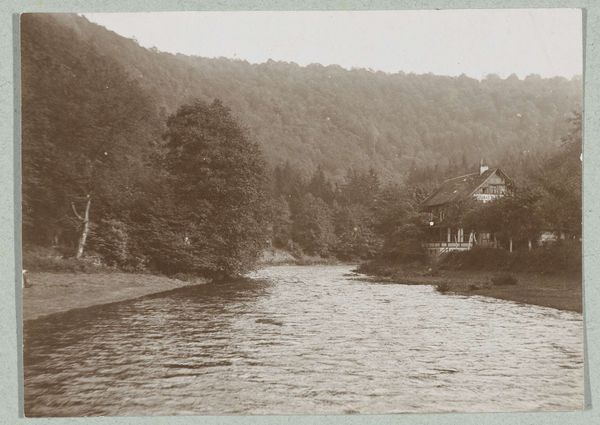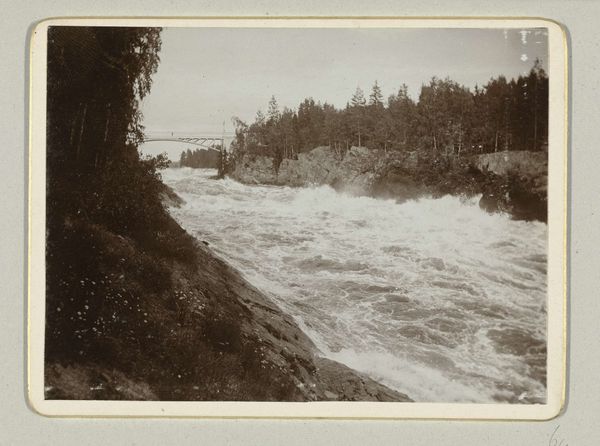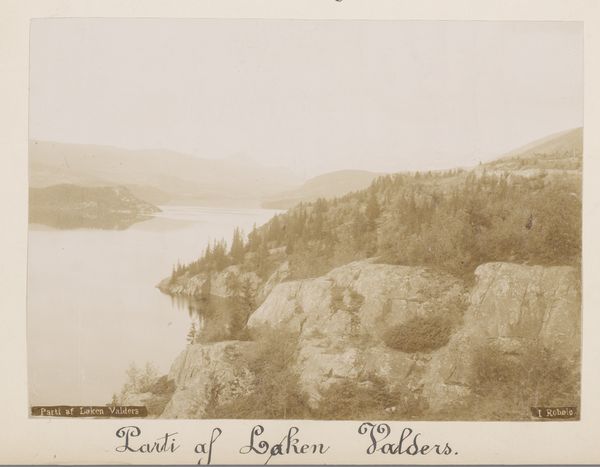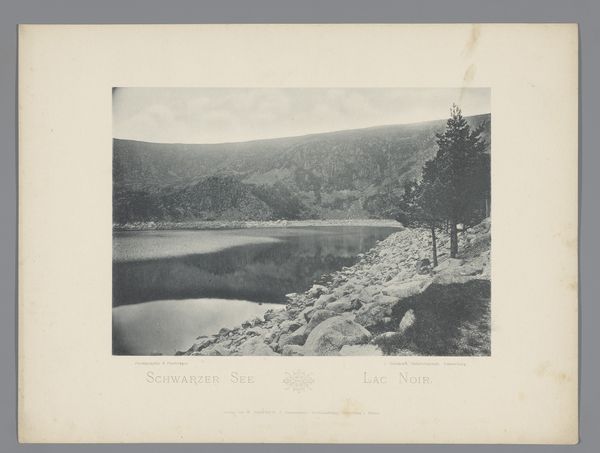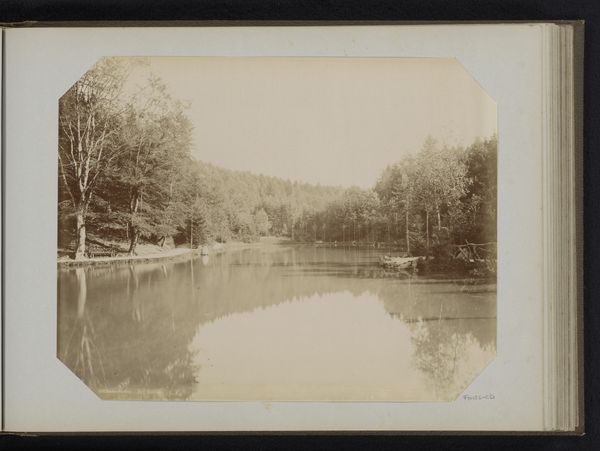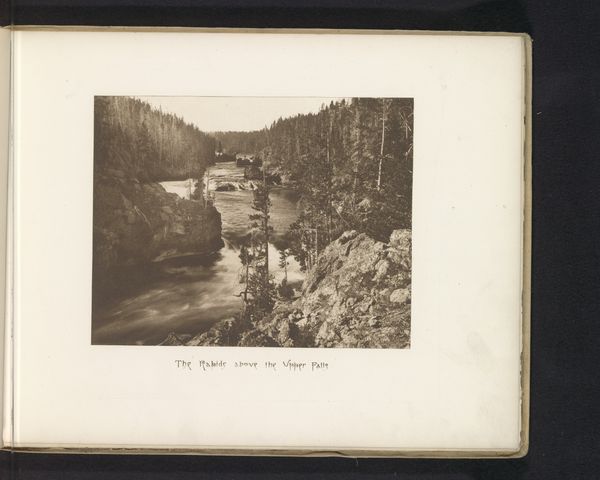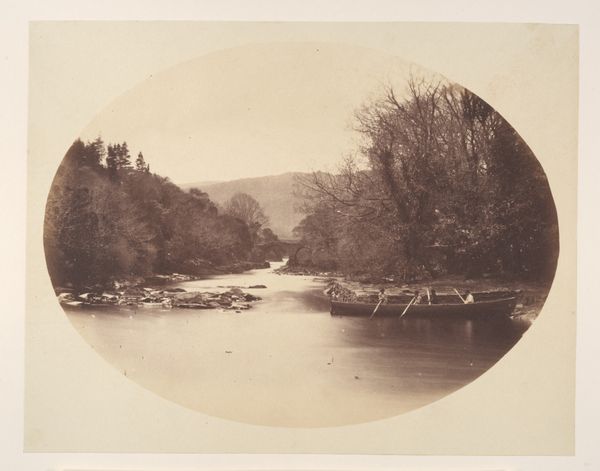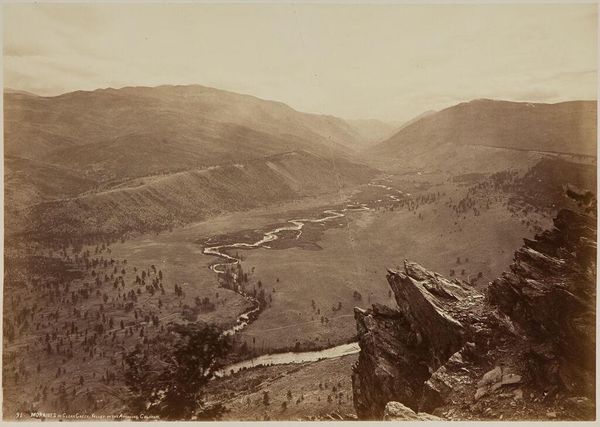
photography, gelatin-silver-print
#
pictorialism
#
landscape
#
photography
#
gelatin-silver-print
Dimensions: height 79 mm, width 109 mm, height 242 mm, width 333 mm
Copyright: Rijks Museum: Open Domain
Curator: Ah, here's a lovely landscape photograph. It's titled "View over the River Ruhr near Remscheid," created around 1902 by Frits Freerks Fontein Fz. using a gelatin silver print. Editor: It feels very serene, almost dreamlike. That sepia tone gives it such a soft, gentle mood. It feels less like looking at a place and more like recalling a memory. Curator: Precisely! The early 20th century was a really transformative time for photography. Movements like pictorialism, which this photograph embodies, aimed to elevate photography to fine art by mimicking the aesthetic qualities of painting and drawing. They manipulated the printing process to achieve a soft focus and an atmospheric effect. Editor: It definitely reads that way. The clarity isn’t really the point, is it? You get a strong sense of the atmosphere, the almost palpable quiet of this river valley. Do you think that desire to be seen as “art” had anything to do with subject matter, too? Because if I hadn't known, I might’ve guessed it was painted rather than shot. Curator: Absolutely. The choice of a landscape scene evokes traditional painting genres, reinforcing photography’s artistic aspirations and placing it within a lineage of established art forms. Fontein, by choosing the Ruhr River, may have also tapped into ideas of Romanticism with an untamed wilderness right there in the German landscape. It shows how landscape wasn’t just about representation, it was about belonging, ownership, sometimes even claiming territory. Editor: That makes me think, if photography can be art because it imitates painting, is it still "truthful?" I wonder if folks back then wrestled with staged scenes, posed portraits and the like in a similar way to now...it raises fascinating questions about documentation, authenticity, even manipulation. It’s interesting how photography becomes both an instrument and a construction of history, right? Curator: It truly does, it acts as this strange confluence. In that era, the constructed element of a photograph wasn't seen as dishonest, per se, it was understood as artifice to enhance feeling. Photography isn’t just pointing and shooting – it’s deeply interpretive from the start, isn’t it? Editor: Always. Thinking about this photo, I wonder, what unseen choices has Fontein made to distill all the layers of the environment to that captured instant. That single photograph offers just a sliver of what was in front of him then and continues to expand over time with everyone who stands in front of it now.
Comments
No comments
Be the first to comment and join the conversation on the ultimate creative platform.

